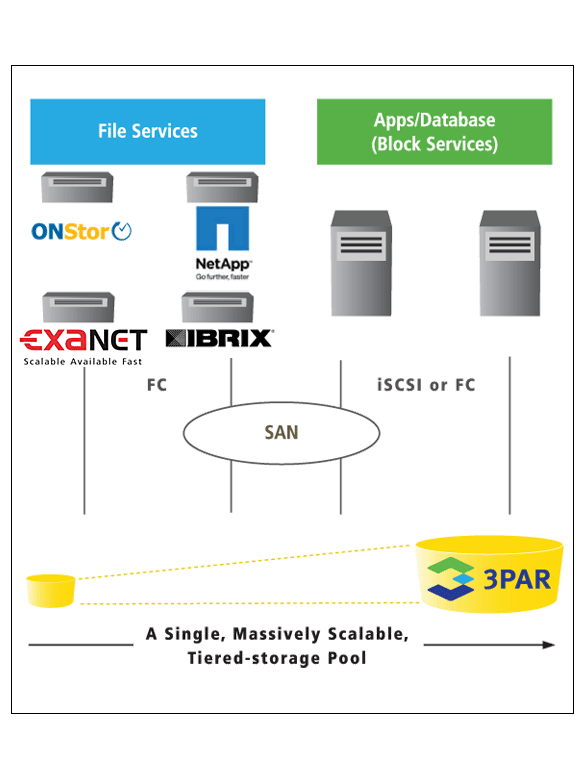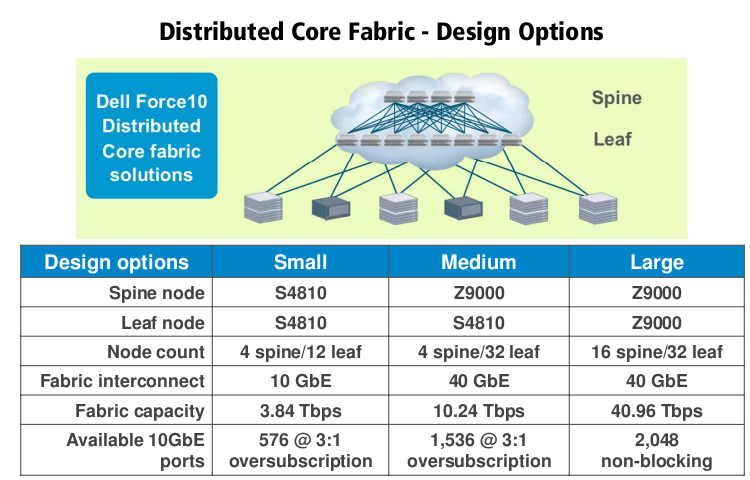About a year ago I was in the market for a new NAS box to hook up to my 3PAR T400, something to eventually replace the Exanet cluster that was hooked up to it since Exanet as a company went bust.
There wasn’t many options left, Onstor had been bought by LSI, I really couldn’t find anything on the Ibrix offering from HP at the time (at least for a SAN-attached Ibrix rather than a scale-out Ibrix), and then there was of course NetApp V-Series. I could not find any trace of Polyserve which HP acquired as well, other than something related to SQL server.
3PAR was suggesting I go with Onstor(this was, of course before the HP/Dell bidding war), claiming they still had a good relationship with Onstor through LSI. I think it was less about the partnership and more about NetApp using the V-series to get their foot in the door and then try to replace the back end disk with their own, a situation understandably 3PAR (or any other competition) doesn’t like to be in.
My VAR on the other hand had another story to tell, after trying to reach out to LSI/Onstor they determined that Onstor was basically on their death bed, with only a single reseller in the country authorized to sell the boxes, and it seemed like there was maybe a half dozen employees left working on the product.
So, I went with NetApp, then promptly left the company and left things in the hands of the rest of the team(there’s been greater than 100% turnover since I left both in the team and in the management).
One of my other friends who used to work for Exanet was suggesting to me that LSI bought Onstor with the possible intention of integrating the NAS technology into their existing storage systems, to be able to offer a converged storage option to the customers, and that the stand alone gateway would probably be going away.
Another product I had my eyes on at the time and 3PAR was working hard with to integrate was the Symantec Filestore product. I was looking forward to using it, other companies were looking to Filestore to replace their Exanet clusters as well. Though I got word through unofficial channels that Symantec planned to kill the software-only version and go the appliance route. It took longer than I was expecting but they finally did it, I was on their site recently and noticed that the only way to get it now is with integrated storage from their Chinese partner.
I kept tabs on Onstor now and then, wondering if it would come back to life in some form, the current state of the product at least from a SAN connectivity perspective seemed to be very poor – as in you couldn’t do things like live software upgrades on a cluster in most cases, the system had to have a full outage(in a lot of cases anyways). But no obvious updates ever came.
Then LSI sold their high end storage division to NetApp. I suppose that was probably the end of the road for Onstor.
So tonight, I was hitting some random sites and decided to check in on Onstor again, only to find most traces of the product erased from LSI’s site.
The only things I ever really heard about Onstor was how the likes of BlueArc and Exanet were replacing Onstor clusters, I talked to one service provider who had an Onstor system (I think connected to 3PAR too), I talked with them briefly while I was thinking about what NAS gateway to move to about a year ago and they seemed fairly content with it, no major complaints. Though it seemed like if they were to buy something new (at that time) they probably wouldn’t buy Onstor due to the uncertainty around it.
It seemed to be an interesting design – using dual processor quad core MIPS CPUs of all things.
RIP Onstor, another one bites the dust.
Hopefully LSI doesn’t do the same to 3ware. I always wondered why 3ware technology was never integrated(as far as I know anyways) into server motherboards, even after LSI acquired them, given that a lot of integrated RAID controllers (Dell etc) are LSI. I think for the most part the 3ware technology is better (if not why did they get acquired and continue to develop products?). I’ve been a 3ware user for what seems like 12 years now, and really have no complaints.
I really hope the HP X9000 NAS gateway works out, the entry level pricing for it as-is seems quite high to me though.


